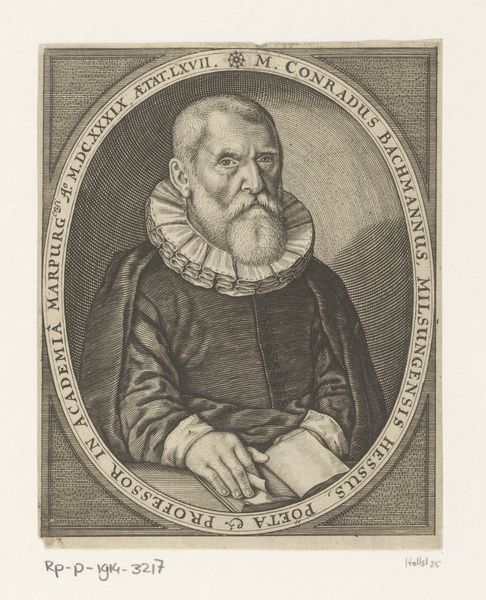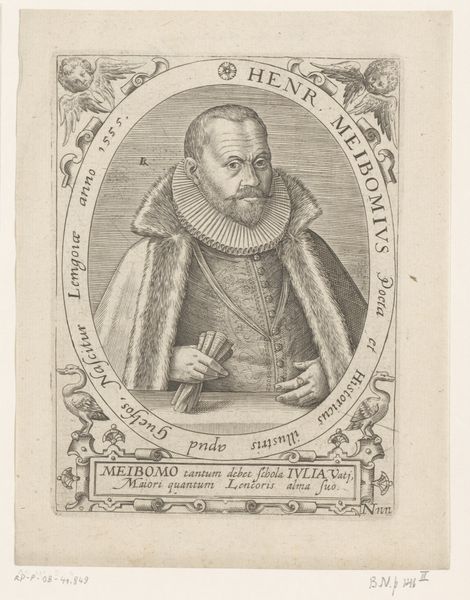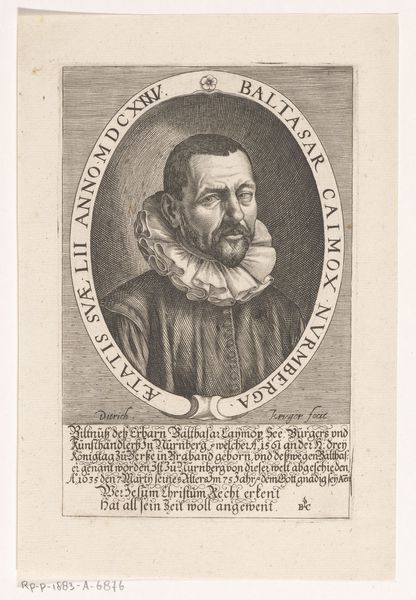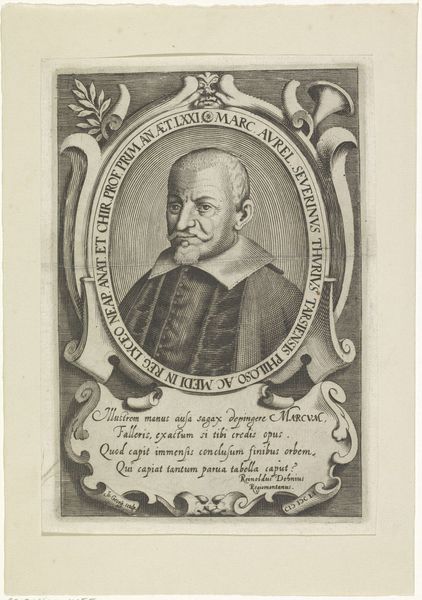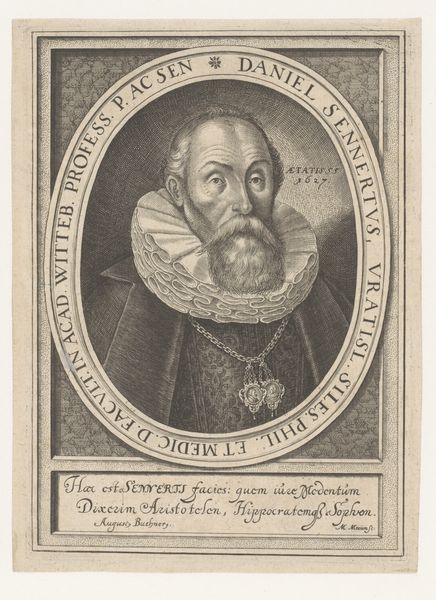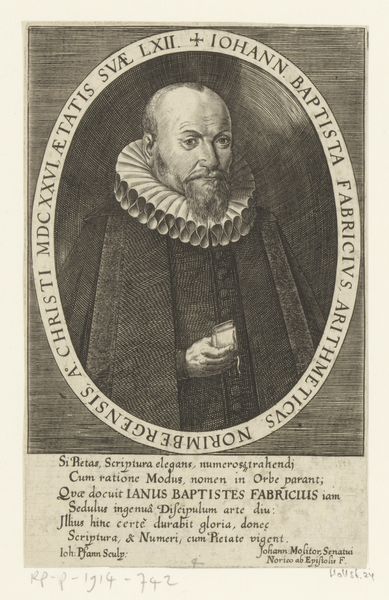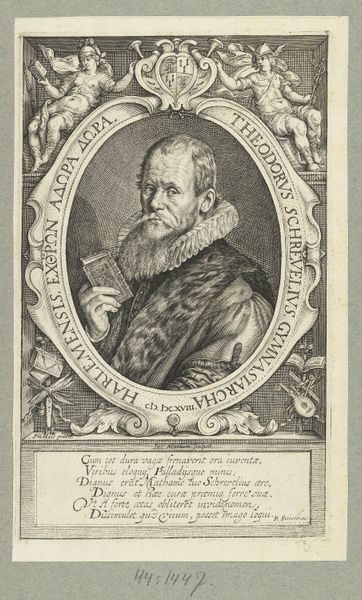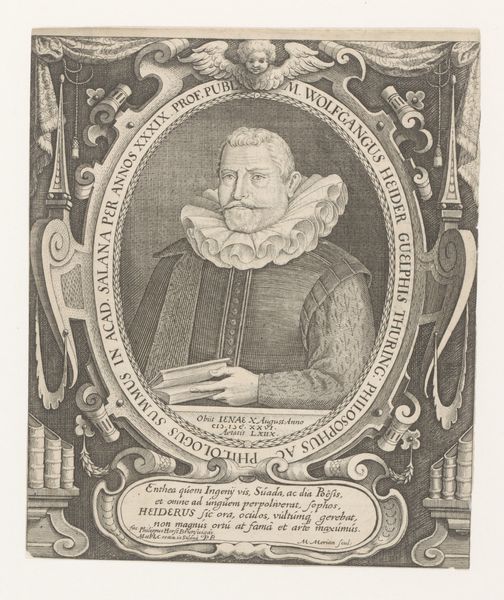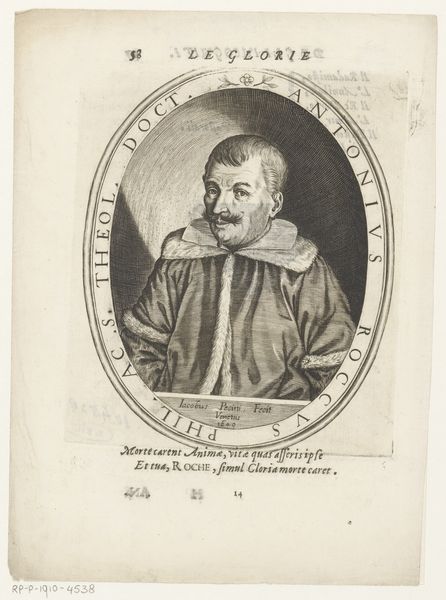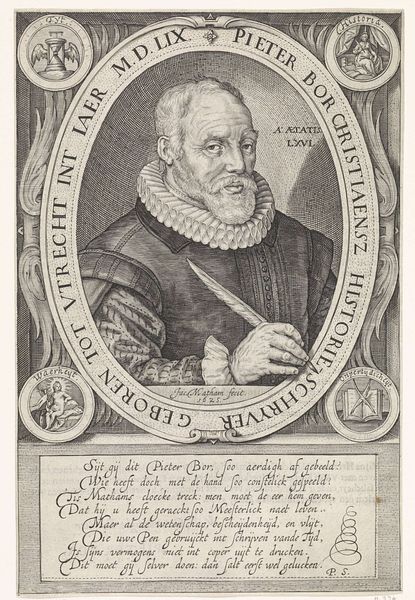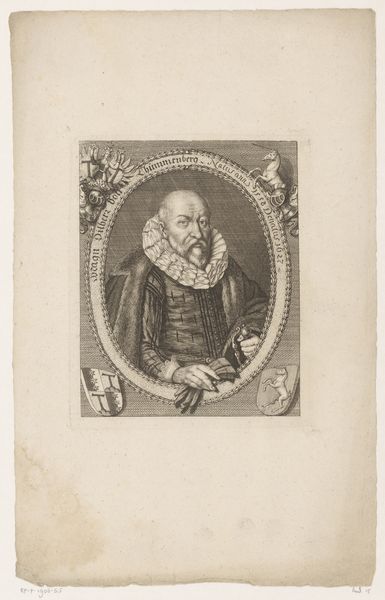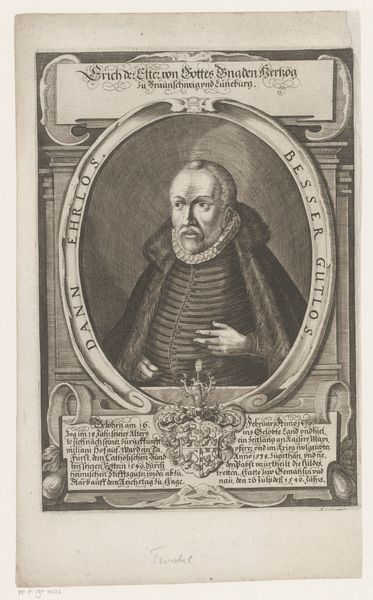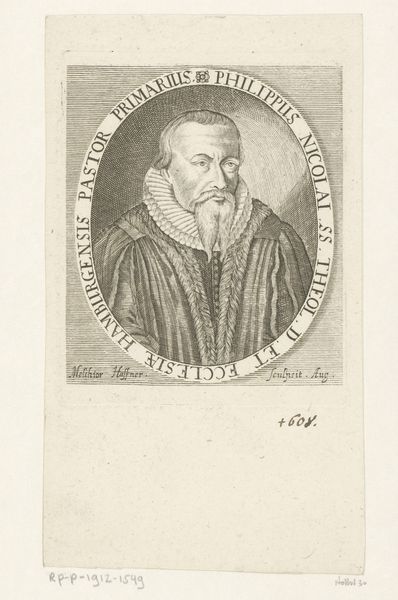
print, engraving
#
portrait
#
baroque
# print
#
old engraving style
#
engraving
Dimensions: height 209 mm, width 151 mm
Copyright: Rijks Museum: Open Domain
Curator: This engraving, titled "Portret van Lorenz Strauch," likely produced between 1619 and 1628, offers a fascinating glimpse into the life of a Nuremberg citizen. The artist is Hans Troschel. Editor: It strikes me as both austere and self-assured. The subject’s gaze is direct, yet there’s a certain weariness etched into his features. And that ruff – so precise! – creates a wonderful contrast with the soft shading of his face. Curator: Indeed. Such portrait engravings were integral to the construction of social identity in early modern Europe. They served not only to commemorate individuals but also to circulate their images within broader networks of influence and patronage. Strauch was a respected citizen and a painter, "pictor" as the text reminds us; his likeness signifies status and civic importance. Editor: The oval frame itself seems symbolic. Notice the two shields flanking the portrait: one bears what appears to be roses, a traditional symbol of love, but also of secrecy. I wonder if it is indicative of Strauch’s affiliations to a particular group, perhaps even a guild or society. Curator: An interesting reading. Those symbols may also have a purely heraldic meaning, representative of Strauch’s lineage or personal emblem. The Latin inscription also contributes, noting his age and affirming a sense of virtue, all under divine patronage. Editor: Right. And note how carefully his hand is holding what appears to be an artist's palette; I think it would have held immediate significance. That image cements the essence of the sitter’s persona, emphasizing his profession to underscore both identity and social contribution. Curator: Consider that Troschel's rendering also reinforces specific values through carefully constructed visuals; a well-groomed beard and refined costume signal dignity and control, ideals championed within the political culture of Nuremberg at the time. These were not merely visual depictions, they were constructed images upholding the cultural order. Editor: So the artwork's influence moves beyond the simple image. The symbols layered within offer potential narratives, connecting us not just to an individual but to his role in that past social system. Curator: Precisely, reminding us how art often intersects with political and civic life. Editor: An elegant, revealing portrait indeed, brimming with visual markers from its era.
Comments
No comments
Be the first to comment and join the conversation on the ultimate creative platform.
